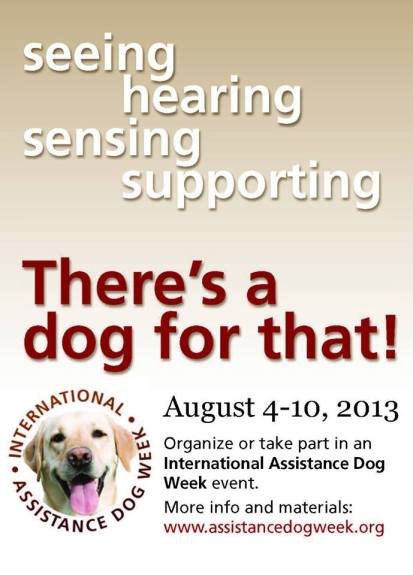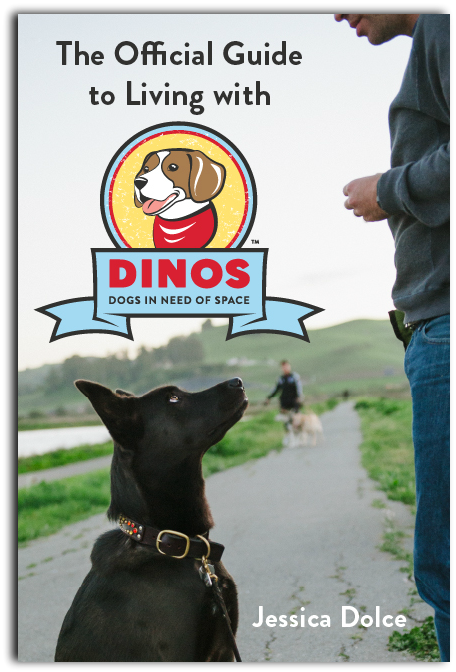Are You Giving or Taking Space? It Matters.
It’s Dog Bite Prevention Week again. Hey! Ho! Let’s Go (look at some ways to not get bit)!
There are a million ways to prevent dog bites. Fortunately dogs aren’t really into biting us all that much. Did you know there are more than 70 million dogs in this country? That’s a lot of teeth. And yet, they rarely use ’em on us, even when we act like fools. But occasionally, due to a variety of factors, dog bites do happen.
One of the ways that we can prevent dog bites is by thinking about space.
Specifically, how we take space from dogs.
When I started talking about Dogs in Need of Space a few years ago, I was looking for a simple way to communicate that all dogs have a right to their personal space and we should do what we can to avoid taking that space from them without permission.
Dog bite prevention tips are often about space (even if that’s not how they’re framing them). That’s because how we give and take space can influence the likelihood of a dog feeling the need to talk to us with their teeth. Let me show you how space plays a role in reducing dog bites:
Body Language: The way we move our bodies can help change how dogs are feeling about a situation. For example, we can take a step back, turn our bodies sideways, or crouch down to reduce the amount of space we take up and appear less threatening.
This week I was charged by a loose and under-socialized dog. I slowed my pace and turned my body 3/4 away from the dog to minimize the confrontation. I rocked my weight back, avoided looking directly at the dog, and kept my hands at my sides. I gave him as much space as I could in that moment through my body language. I got sniffed and he left.
Leash Laws: Using a leash helps to create space between your dog and other dogs or people (including the elderly and the disabled). When we leash our dogs and keep them by our sides as we pass others it maximizes the amount of space between both parties. This allows the person or the other dog, who may not appreciate meeting another dog while they are on leash, the opportunity to pass by calmly.
Leash laws can reduce bites between dogs, but also to humans (since we’re the ones who usually get bit when we try to intervene in a dog-dog brouhaha).
Not leashing your dog and allowing it to approach another dog or a person without their permission robs others of their personal space. When that happens, many dogs and people will act in ways that will increase the likelihood of a bite (think: screaming, running away, and hitting or threatening your dog).
Not sure when to leash your dog? Ta-dah!
Proper Containment: Dogs that are properly contained on their property cannot escape to chase passing dogs and people. When we keep our dogs on our property using a fence, a lead, or a rock solid recall/proper supervision, we can create enough space between our dogs and passing pedestrians, playing kids, dog walkers, etc., so that they can all whiz by safely and without incident.
The other day while I was walking two dogs, I was chased by a loose dog that was not happy that we were walking by his lawn. I retreated into the street and up the block a bit to give him as much space as possible. I did not want him to feel as though we were in “his” space and that he had to protect his property. He followed us for 3 houses, then turned back. I gave him space, but I was at risk. You know what would have been a safer way to give that dog space near his property? A fence.
Being Polite: Every single time you pause to ask permission when meeting an unfamiliar dog you are creating space on multiple levels. You’re creating physical space by stopping your body/hands/your dog from moving forward without an invitation. You’re creating the space to observe by allowing enough time to look at the dog’s body language for clues about how the dog really feels about meeting you or your dog. You are creating the space for a response by allowing the dog and the other owner time to respond to your request, which might be “no”. In which case, you are giving them the space to leave.
Seriously, just being polite and respectful by asking first is a real winner in the preventing bites category.
Kids and Dogs: When we teach kids that they are not to go near the dog when it’s eating or chewing a bone, we’re teaching them to give a dog space. Same goes for teaching them not to use dogs as full body bean bag chairs, not to hug them, not to approach loose or chained dogs, and also to get the heck out of the dog’s crate. It’s all about teaching kids to respect the dog’s space.
Avoiding Surprises: If you are a jogger or cyclist, please give dogs physical space by not zooming right up on them. When you make a wide arc around them, you maximize the space between you. Dogs are dogs – they don’t understand why you are running full tilt right at them. When they are surprised by your approach, it increases the likelihood of a bite. Even the best behaved, most well socialized dogs can have a bad moment when they are surprised by having you suddenly in their space.
Good Management: Making good choices gives our dogs the space they need to succeed. When we have guests come over, workmen, unexpected deliveries, etc. we can give our dogs the space they need to feel safe by using crates, gates, leashes, and old-fashion doors to separate them from people. Same goes for on-leash walks. You may need to say “no” when someone tries to approach your dogs. You’re making a smart choice, so don’t worry if it pisses someone else off. You’re in charge of doing your best to create the space your dog needs to succeed. Always stand up for them.
Rocket Ships: Or, we can forget everything I said, load all of us humans onto a rocket and blast us into space. The dogs would miss us, but we’d prevent lots of bites if we were on Mars. Also, would I get to hangout with Neil DeGrasse Tyson if we were all in space? That would be so rad.
Wrapping it all up: The next time you’re with dogs and not sure what the best thing to do would be, you can ask yourself:
Am I giving space or taking it away? How can I create space so that everyone stays calm and safe?
And so, another Dog Bite Prevention Week comes to a close here on Notes from a Dog Walker with this thought: SPACE, it’s not just about the cosmos, it’s also a great way to prevent a lot of dog bites.



























